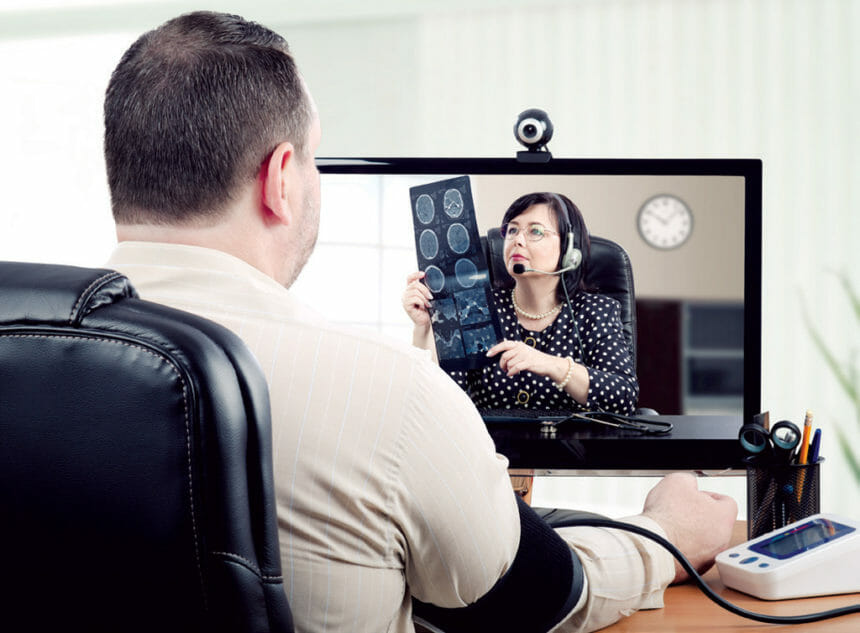
Telehealth recently has been touted for its potential to improve employee satisfaction for workers who have access to it and reduce emergency department visits for some senior living residents.
Before those benefits can be realized, however, potential patients must be convinced of the value of telehealth. A new survey suggests that many aged 50 to 80 are not quite there.
A National Poll on Healthy Aging on the topic involved a countrywide sample of 2,256 adults aged 50 to 80 years who in May answered questions about several aspects of video-based telehealth. The research was conducted by the University of Michigan Institute for Healthcare Policy and Innovation with support from AARP and Michigan Medicine, the University of Michigan’s academic medical center.
More than 80% of the adults polled expressed at least one concern about seeing a physician or other healthcare professional virtually rather than in person, and 47% worried about getting the technology to work. Fifty-five percent, however, said they would be willing to try telehealth if they needed one-time follow-up after a procedure or surgery, and 58% said they would consider using telehealth for a return office visit.
Focusing on uses of telehealth such as follow-up or return visits is one way to help adults in this age range become comfortable with the concept of telehealth and see its value, said Preeti Malani, M.D., the poll’s director and a professor of internal medicine at the University of Michigan.
“Telehealth won’t replace in-person medical examinations completely, but for situations where in-person visits aren’t essential, they can save time and resources for patients and providers alike,” she said. “Providers shouldn’t assume older adults aren’t receptive to virtual visits, but they should understand and work to overcome some of the reasons for hesitation.”
Some other reasons for hesitation that the poll participants expressed about telehealth:
- 71% were concerned that providers could not conduct a physical examination over a webcam or smartphone camera.
- 68% worried that the quality of care they would receive would not be as good.
- 49% said they were concerned about privacy.
- 49% thought they would not feel personally connected to the healthcare professional.
- 39% worried they would have difficulty seeing or hearing the healthcare professional.
The importance of acceptance and adoption of telehealth is growing; the researchers pointed out that starting in 2020, Medicare Advantage plans will be able to reimburse healthcare providers for seeing patients via computer or smartphone, and employees and Medicaid beneficiaries increasingly have access to telehealth.



